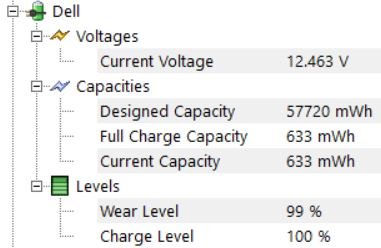Apple has launched its new Macs sporting the M1 Max & M1 Pro processors. The main highlight of these devices is their power efficiency, which basically denotes the "number of hours" the battery lasts before the laptop shuts down.
In many reviews, I have seen people comparing the battery performance of newly bought Macs with a year older Windows laptop. This is not the correct way because with time, battery wears down and doesn't operate at full capacity. For example, following snap shows that the battery has 99% reduction in its full capacity.

Hence, the correct way to compare battery performance should be to take devices with similar 'full capacity' and similar age.
This also applies to smartphones. People should take care of this aspect while making power comparisons.
In many reviews, I have seen people comparing the battery performance of newly bought Macs with a year older Windows laptop. This is not the correct way because with time, battery wears down and doesn't operate at full capacity. For example, following snap shows that the battery has 99% reduction in its full capacity.

Hence, the correct way to compare battery performance should be to take devices with similar 'full capacity' and similar age.
This also applies to smartphones. People should take care of this aspect while making power comparisons.


